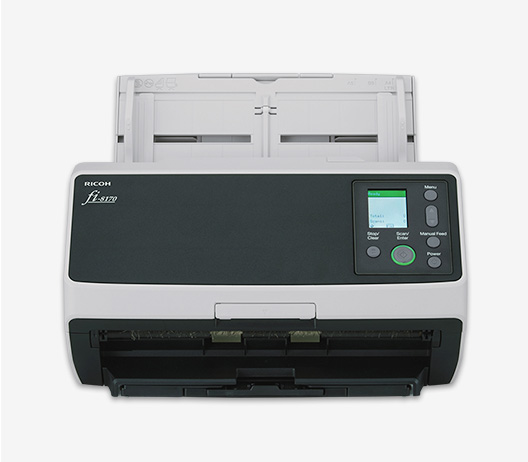
fi-8170
The Next Generation of Scanning Excellence

Healthcare organizations and providers require powerful, advanced and trusted technology to support its needs, including capturing, storing, organizing and protecting patient data. Sharp HealthCare is a not-for-profit regional healthcare system that serves a population of about 3 million people in San Diego County, California. It includes four acute-care hospitals, three specialty hospitals, two medical groups, and a range of other facilities and services.
Sharp is not only a large medical presence in the San Diego area, it’s also a technology leader. The organization’s pursuit of leading-edge technology has earned its widespread recognition, including accolades from sources such as Computerworld, InformationWeek, Healthcare IT News, and Hospitals & Health Networks magazine.
One critical aspect of operating such a sprawling, information-intensive enterprise is capturing all of the information related to patient care—information that previous took the form of paper documents and identification that had to be scanned and incorporated into Sharp’s business and electronic medical records (EMR) systems.
For years, Sharp used a variety of scanner brands and models, but that strategy became increasingly problematic, especially as the number of scanners used by the organization grew into the hundreds.
“We realized that with our scanning requirements growing so much, we needed to standardize on a single vendor for the greatest operating efficiency and cost effectiveness,” says Cathy Fuhrman, Sharp’s Manager of Information Systems.
The technology includes preset profiles that clean up the majority of standard documents; Assisted Scanning, which ensures the best image cleanup through visual selection; and a preview option that shows driver changes in real time, eliminating the need to scan and test again.
Simply create a scanning profile and then export to specific scanners, regardless of their location. It takes just a few clicks to set up a scanning profile and deploy it remotely. This ensures that everyone is using the proper scanning profiles.
Sharp put out a Request for Proposal and selected fi Series scanners. Today, Sharp HealthCare uses hundreds of fi Series scanners, which are invaluable for scanning items like patient ID cards, charts, and other content that comprises part of a patient’s record. These scanners were connected to Sharp’s enterprise content management software. When a Sharp employee scanned a document, the scanned image was quickly and automatically populated to the system, and was available for viewing by Sharp staff within moments.
The fi Series scanners handled about 600,000 images a week. Some of the heaviest use of the scanners was at the front desks; in 2014, Sharp admitted more than 89,000 patients, scanning insurance cards and identification cards, along with other admitting paperwork. Sharp also planned to begin using PaperStream IP TWAIN and ISIS drivers. PSIP, an intelligent image enhancement driver designed for fi Series line of scanners, delivers a powerful image correction solution so documents can quickly and easily be converted into exceptionally clean images.
The fi Series scanners provided Sharp with an extremely reliable, easy-to-use IT asset that streamlines daily workflows.
“A key factor we looked for when evaluating different scanner brands was reliability,” says Fuhrman. “A typical use case is front-desk admissions. Everyone being admitted has to be registered with any number of ID cards and other documents. We have fi Series workgroup scanners that are working 24 hours a day, seven days a week. We have a three-year refresh schedule for the scanners to ensure that models don’t get too old, but we don’t need to replace them because of problems such as malfunctions or jams. If that happened, our users would let us know about it quickly. The fi Series scanners simply do not fail.”
The scanners were also easy to integrate with the rest of the enterprise IT systems.
“The fi Series scanners are really plug and play,” Fuhrman says. “If we need another scanner, we order it, plug it in, and it’s integrated with the ECM system. Plus, they involve very little training. There is no training needed for the work- group scanners—employees simply start using them—and only minimal training for employees on topics such as setting resolution output when using high-production models.”
“The savings will be substantial,” says Fuhrman. “We anticipate that using PSIP instead of our current proprietary driver will save us about $150,000 annually for as long as we use fi Series scanners, which we plan on doing.”